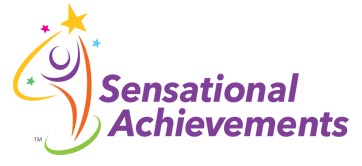What does an IEE Include?
This service is contracted through the school district. Sensational Achievements provides a comprehensive evaluation of sensory processing and motor skills to determine the impact on learning. The evaluation is conducted over 4-6 hours and includes a full battery of standardized testing, clinical observations, school-based observations, teacher and parent interview, and records review. Evaluation may also lead to identification of the functional presentation of dysgraphia if observed. The evaluating therapist will present findings at a PPT meeting once the evaluation is complete.
Why would a child need an independent educational occupational therapy evaluation?
Our sensory-based occupational therapy evaluations are extensive and comprehensive in nature. We look beyond writing and fine motor skills at how a child/adolescent is taking in and using information from his/her body and the environment to adapt to educational demands throughout the day. This is much more than filling out a Sensory Profile and evaluating visual motor skills. We do direct evaluation and clinical observation of sensory processing abilities to identify over/under-responsivities, difficulties in understanding/responding to sensory information, deficits in postural-ocular skills affecting body control, and praxis deficits.
Over and Under-responsivities can result in dysregulation or disconnection from the environment and contribute to sensory-seeking behaviors. Poor understanding of how the body is taking in a using sensory information means a child/adolescent is working significantly harder than same-age peers to do things that others can do automatically. Praxis deficits can co-exist with executive function issues, impacting one’s ability to come up with ideas of what to do with his/her body or objects, sequence a plan of action, and execute tasks in real time (ex: gather materials for assignment completion or gain independence in daily routines). Functional vision is also fully assessed as it can impact spatial judgement, tolerance of gym class, use of vision to safely navigate the environment, and/or visual attention for tabletop academic work.
We complete extensive visual perceptual, visual motor, fine motor, and graphomotor testing using a variety of standardized assessments so that we are able to determine the exact nature and factors contributing to handwriting deficits. In the case of dysgraphia, this means differentiating patterns of Motor Dysgraphia, Spatial Dysgraphia, and Dyslexic Dysgraphia which can then be reviewed and diagnosed by a Psychologist.
If a child’s disability makes them unable to be assessed with standardized measures, extensive clinical observations incorporating standardized testing materials will be done to determine current level of function and developmental ages.
Why would we need to consider an OT evaluation when the diagnosis doesn’t appear to be motor-based?
- Children with ADHD show difficulties supressing eye movements (Munoz, 2003) and a subset presents with altered vestibular brainstem reflexes impacting postural control (Isaac, et al, 2017). More intense movement is associated with better performance when providing correct responses compared to typical peers (Hartano, et al, 2016)
- Children with Dyslexia often show impairments in steady visual fixation, inefficient saccades, and possible motion processing disorders (Leigh and Zee, 2006). Improving motion detection, tracking, scanning, and hand-eye coordination results in improved phonological awareness (Quian & Bi, 2015).
- Children with Autism sometimes have sensory over-responsivities but can also be behaviorally over-responsive due to difficulties adapting and responding to incoming sensory information (Schaaf, Roley, & Blanche, 2001). Functional vision deficits impact eye contact, light sensitivity, and visual attention. Coexisting Dyspraxias impact functional and goal-directed behavior.
- Fares, Fares, & Fares (2017) found that 21% of 180 children reporting non-specific neck pain from Smartphone and tablet use had eye symptoms and 82% reported a change in psychological and social behavior.
For more information, download our resource sheet.
Educational Consultations/IEP Review
Hyperactive, noncompliant, irritable, inattentive, anxious, aggressive, controlling, withdrawn, loud, and disorganized are just a few “labels” by which a child can easily become known by teachers, parents, and peers. It is important to understand that these children are not intentionally misbehaving and may need additional supports in place to help them be successful. Once the exact nature of the sensory processing deficits are identified, intervention can be customized to address a child’s unique sensory profile and needs.
Adults around them should be given the tools and strategies to help them succeed without making them stand out from their peers. The therapists at Sensational Achievements also provide training and resources to a child’s school team using our unique Body Activated LearningTM approach in an effort to create an environment to help all children succeed. Through education, the other students also gain sensational self-awareness of their own needs and individual differences. In this way, teachers can celebrate differences and “normalize” the need for everyone to use sensory strategies to enhance focus and attention, fostering a nurturing and supportive environment where all children can grow into their best selves.
Consultations to review your child’s current IEP, school-based therapy goals, school-based sensory support plan, and participate in PPT meetings can be added to your treatment package for an additional fee.
Call us at 203-200-7256 to schedule and evaluation or book a free phone consult
References:
Fares, J., Fares, M. Y., & Fares, Y. (2017). Musculoskeletal neck pain in children and adolescents: Risk factors and complications. Surgical neurology international, 8, 72. doi:10.4103/sni.sni_445_16.
Hartanto,T.A., Krafft, C.E., Losif, A.M., & Schweitzer, J.B. (2016). A trial by trial analysis reveals more intense physical activity is associated with better cognitive control performance in attention-deficit/hyperactivity disorder. Child Neuropsychology 22(5), 618–626. doi:10.1080/09297049.2015.1044511.
Isaac, V., Olmedo, D. , Aboitiz, F., & Delano, P. H. (2017). Altered Cervical Vestibular-Evoked Myogenic Potential in Children with Attention Deficit and Hyperactivity Disorder. Frontiers in neurology, 8, 90. doi:10.3389/fneur.2017.00090
Leigh, J.R., & Zee, D.S., (2006). Neurology of eye movements (4th ed.). New York: Oxford University Press, Inc.
Munoz DP, Armstrong IT, Hampton KA, Moore KD (2003). Altered control of visual fixation and saccadic eye movements in attention-deficit hyperactivity disorder. Journal of Neurophysiology. 2003 Jul;90(1):503-14. Epub 2003 Apr 2. doi: 10.1152/jn.00192.2003.
Schaaf, R, Roley, S., & Blanche, E. (2001). Sensory Integration: Applying Clinical Reasoning to Practice with Diverse Populations, Austin, TX: Pro-ed, Inc.
Qian, Y., & Bi, H. Y. (2015). The effect of magnocellular-based visual-motor intervention on Chinese children with developmental dyslexia. Frontiers in psychology, 6, 1529. doi:10.3389/fpsyg.2015.01529








